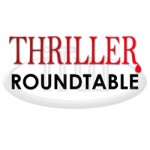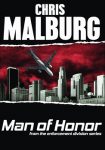

April 30 – May 6: ” How do you add realism to your dialogue?”
 This week ITW members Mariah Fredericks, Chris Malburg, Sanjida Kay, Ann Simas and Judy Penz Sheluk discuss dialogue, answering the question: How do you add realism to your dialogue? You *really* won’t want to miss this! Scroll down to the “comments” section to follow along.
This week ITW members Mariah Fredericks, Chris Malburg, Sanjida Kay, Ann Simas and Judy Penz Sheluk discuss dialogue, answering the question: How do you add realism to your dialogue? You *really* won’t want to miss this! Scroll down to the “comments” section to follow along.
 Judy Penz Sheluk is the author of two mystery series: The Glass Dolphin Mysteries (THE HANGED MAN’S NOOSE and A HOLE IN ONE) and The Marketville Mysteries (SKELETONS IN THE ATTIC). Her short crime fiction appears is several collections. In addition to ITW, Judy is member of Sisters in Crime, the Short Mystery Fiction Society, and Crime Writers of Canada, where she serves on the Board of Directors as the Regional Representative for Toronto/Southern Ontario.
Judy Penz Sheluk is the author of two mystery series: The Glass Dolphin Mysteries (THE HANGED MAN’S NOOSE and A HOLE IN ONE) and The Marketville Mysteries (SKELETONS IN THE ATTIC). Her short crime fiction appears is several collections. In addition to ITW, Judy is member of Sisters in Crime, the Short Mystery Fiction Society, and Crime Writers of Canada, where she serves on the Board of Directors as the Regional Representative for Toronto/Southern Ontario.
 Ann Simas lives in Oregon, but she is a Colorado girl at heart, having grown up in the Rocky Mountains. An avid word-lover since childhood, she penned her first fiction “book” in high school. The author of 21 novels, one novella, and one short-story collection, she particularly likes to write a mix of mystery/thriller/suspense, with a love story and paranormal or supernatural elements. In addition to being a three-time Romance Writers of America Golden Heart Finalist, Ann is also an award-winning watercolorist and budding photographer who enjoys needlework and gardening in her spare time.
Ann Simas lives in Oregon, but she is a Colorado girl at heart, having grown up in the Rocky Mountains. An avid word-lover since childhood, she penned her first fiction “book” in high school. The author of 21 novels, one novella, and one short-story collection, she particularly likes to write a mix of mystery/thriller/suspense, with a love story and paranormal or supernatural elements. In addition to being a three-time Romance Writers of America Golden Heart Finalist, Ann is also an award-winning watercolorist and budding photographer who enjoys needlework and gardening in her spare time.
 Sanjida Kay is the author of three psychological thrillers, Bone by Bone, The Stolen Child and My Mother’s Secret, published by Corvus Books. Bone by Bone was long listed for the CWA Steel Dagger Award, nominated as one of the best crime and thriller books of 2016 by The Guardian newspaper. Her thrillers are available on Audible as audiobooks. Sanjida lives in Bristol, England, with her husband and her daughter
Sanjida Kay is the author of three psychological thrillers, Bone by Bone, The Stolen Child and My Mother’s Secret, published by Corvus Books. Bone by Bone was long listed for the CWA Steel Dagger Award, nominated as one of the best crime and thriller books of 2016 by The Guardian newspaper. Her thrillers are available on Audible as audiobooks. Sanjida lives in Bristol, England, with her husband and her daughter
 Chris Malburg is a widely published author, with over 4 million words published in 22 popular business books and four novels. Simon & Schuster, Putnam, Wiley and McGraw Hill all publish Chris’ work, which is consumed in most western countries. After classes at Stanford Writers School, Chris began the fun side of his career. He has crossed the chasm into fiction with the fourth installment in his Enforcement Division series. Chris is known for his meticulous research of the material presented in his books. MAN OF HONOR is an example. While preparing this book, Chris took the same aircraft accident investigation courses at USC’s Viterbi School of Engineering that the NTSB and FAA accident investigators take.
Chris Malburg is a widely published author, with over 4 million words published in 22 popular business books and four novels. Simon & Schuster, Putnam, Wiley and McGraw Hill all publish Chris’ work, which is consumed in most western countries. After classes at Stanford Writers School, Chris began the fun side of his career. He has crossed the chasm into fiction with the fourth installment in his Enforcement Division series. Chris is known for his meticulous research of the material presented in his books. MAN OF HONOR is an example. While preparing this book, Chris took the same aircraft accident investigation courses at USC’s Viterbi School of Engineering that the NTSB and FAA accident investigators take.
 Mariah Fredericks was born and raised in New York City, where she still lives today with her family. She is a graduate of Vassar College with a BA in history. She has written several novels for young adults; her novel Crunch Time was nominated for an Edgar in 2007. A Death of No Importance is her first mystery for adults.
Mariah Fredericks was born and raised in New York City, where she still lives today with her family. She is a graduate of Vassar College with a BA in history. She has written several novels for young adults; her novel Crunch Time was nominated for an Edgar in 2007. A Death of No Importance is her first mystery for adults.
- LAST GIRL MISSING with K.L. Murphy - July 25, 2024
- CHILD OF DUST with Yigal Zur - July 25, 2024
- THE RAVENWOOD CONSPIRACY with Michael Siverling - July 19, 2024
